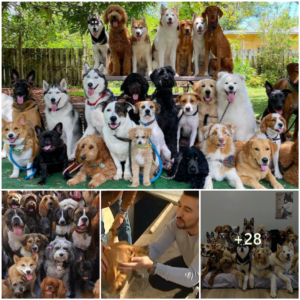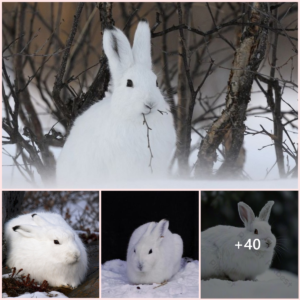Why Miniature Horses Make Such Great Service Animals
While bringing one on a plane now is harder, miniature horses are still perfect for the job.
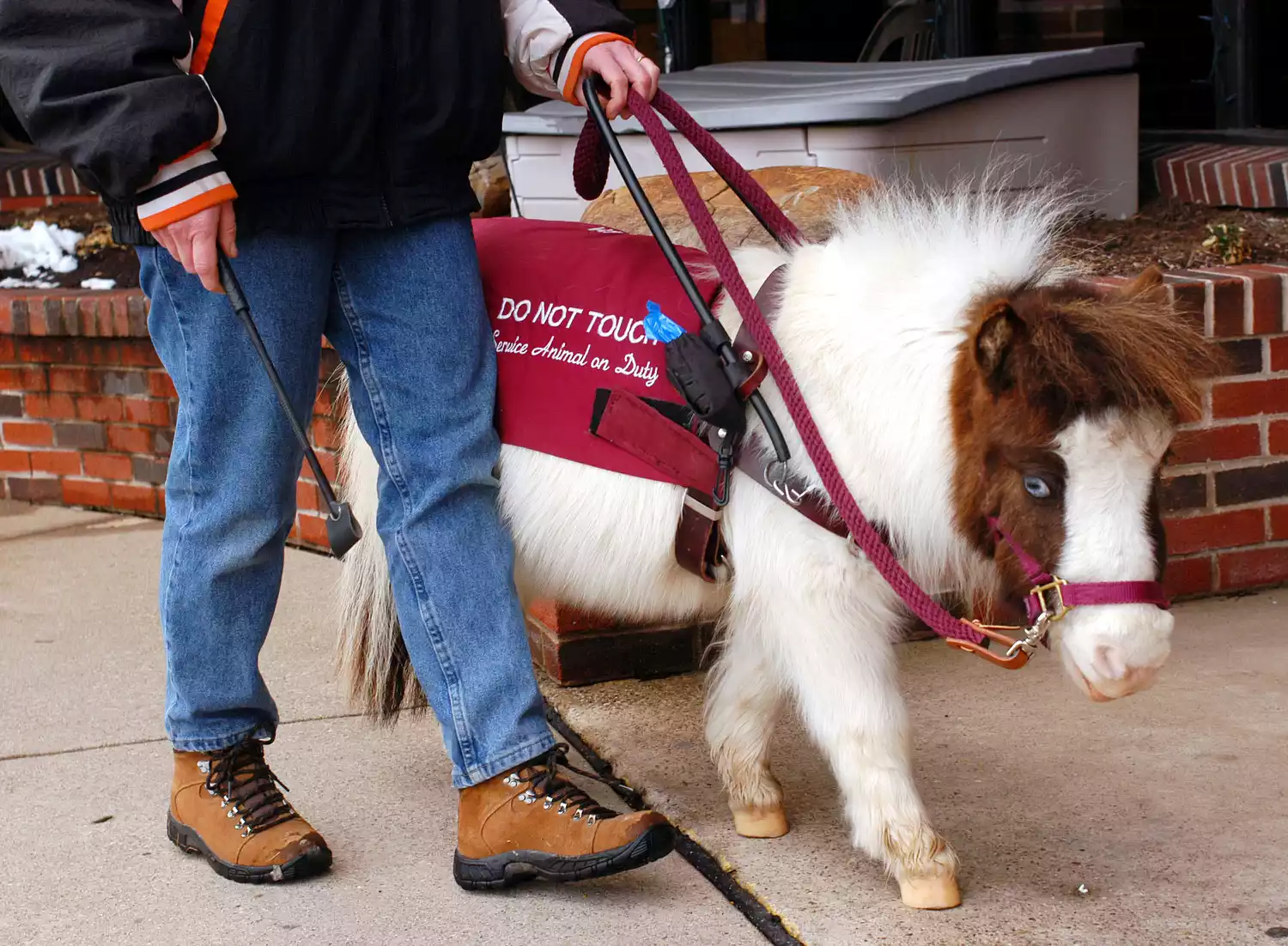
A few years ago, Southwest Airlines made headlines with news that they were allowing miniature horses as service animals. At the time, their policy read as such:
“Southwest Airlines welcomes trained dogs, cats, and miniature horses as service animals onboard our flights as long as the Customer is able to provide credible verbal assurance that the animal is a trained service animal. Southwest Airlines does not accept unusual or exotic species of animals.”
Unfortunately, due to too many people bringing pets on planes, the U.S. Department of Transportation amended the Air Carrier Access Act (ACAA). Miniature horses are no longer protected by federal law to fly with their person in the cabin—and on March 1, 2021, Southwest changed their service and emotional support animal policies to allow only dogs in the role.
But it all begs the question: Did you know that there are service miniature horses? Let alone service cats?
Emotional support animals come in all shapes and sizes—peacocks, squirrels, you name it—but service animals are trained and actually act as guides. Horses are smart and seriously intuitive, but many people don’t know they can take the place of dogs in, among other tasks, guiding visually impaired people. And as surprising as that may seem, it all makes perfect sense. Here’s why.
The Guide Horse Foundation reminds us that horses are natural guide animals that have been showing humans the way for ages. And it’s natural for them to do so. They note that in the wild, horses show a natural guide instinct. “When another horse goes blind in a herd, a sighted horse accepts responsibility for the welfare of the blind horse and guides it with the herd.” They also point out the following reasons why miniature horses make a great match for the job.
1. Long Lifespan
While a guide dog can serve for maybe eight to 12 years, horse have an average lifespan of 30 to 40 years, and can live to be more than 50 years old. Since people and their service animals become so bonded, how wonderful to have each other for so long.

2. Cost Effective
Only 7,000 out of the 1.3 million people who are blind in the United States use guide dogs. Training can cost up to $60,000, according to the Guide Dog Users national advocacy group, which could prove prohibitive. “Hence, a Guide Horse could be more cost-effective and ensure that more blind people receive a guide animal,” notes the foundation.
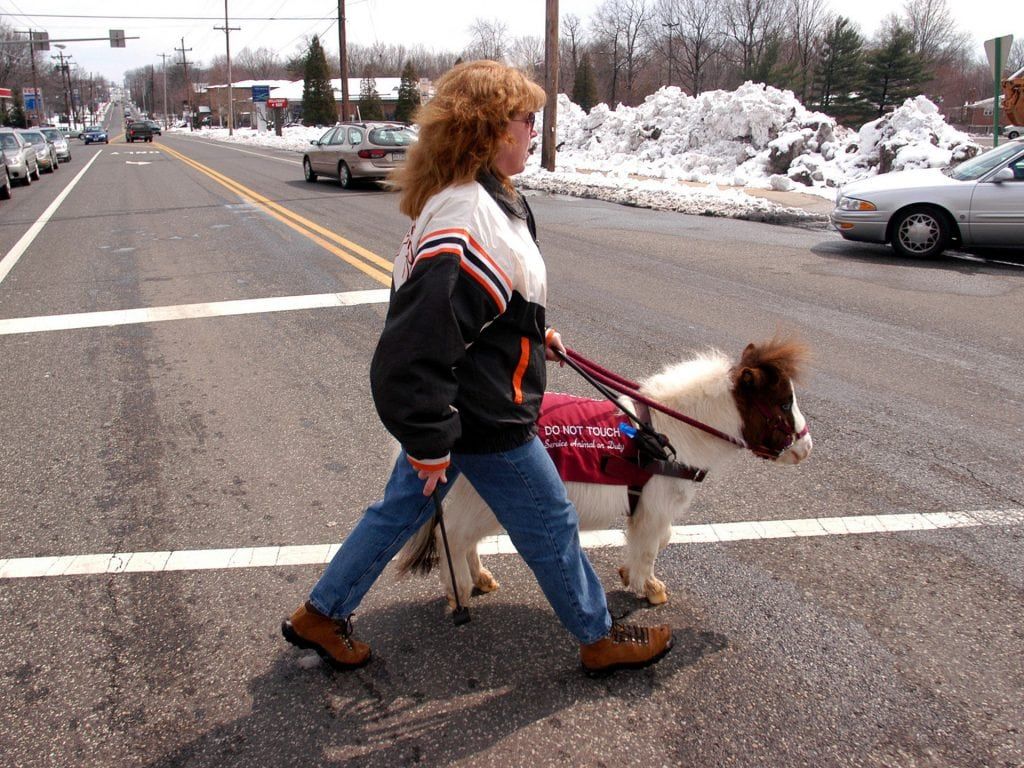
3. Better Acceptance
Guide dog users report resistance in accessing public places where dogs are not permitted because their dog is perceived as a pet. Those who use miniature horses do not seem to have this problem since the animal is more easily recognizable as a service one.
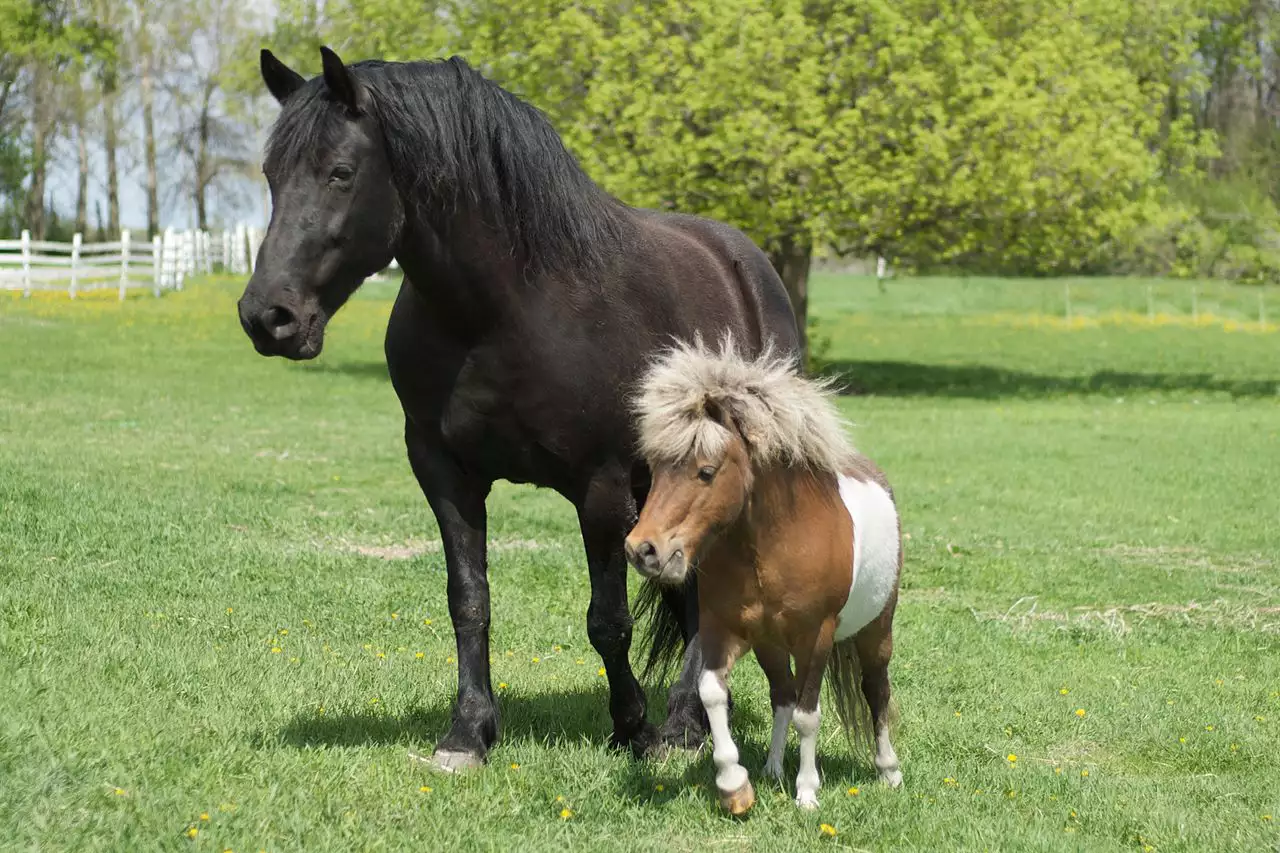
4. Calm Nature
Just think of calvary and police horses in the midst of chaos—horses can be trained to remain very, very calm. This isn’t to say that dogs can not be—they obviously can—but it’s just another trait of horses that makes them great for the job.
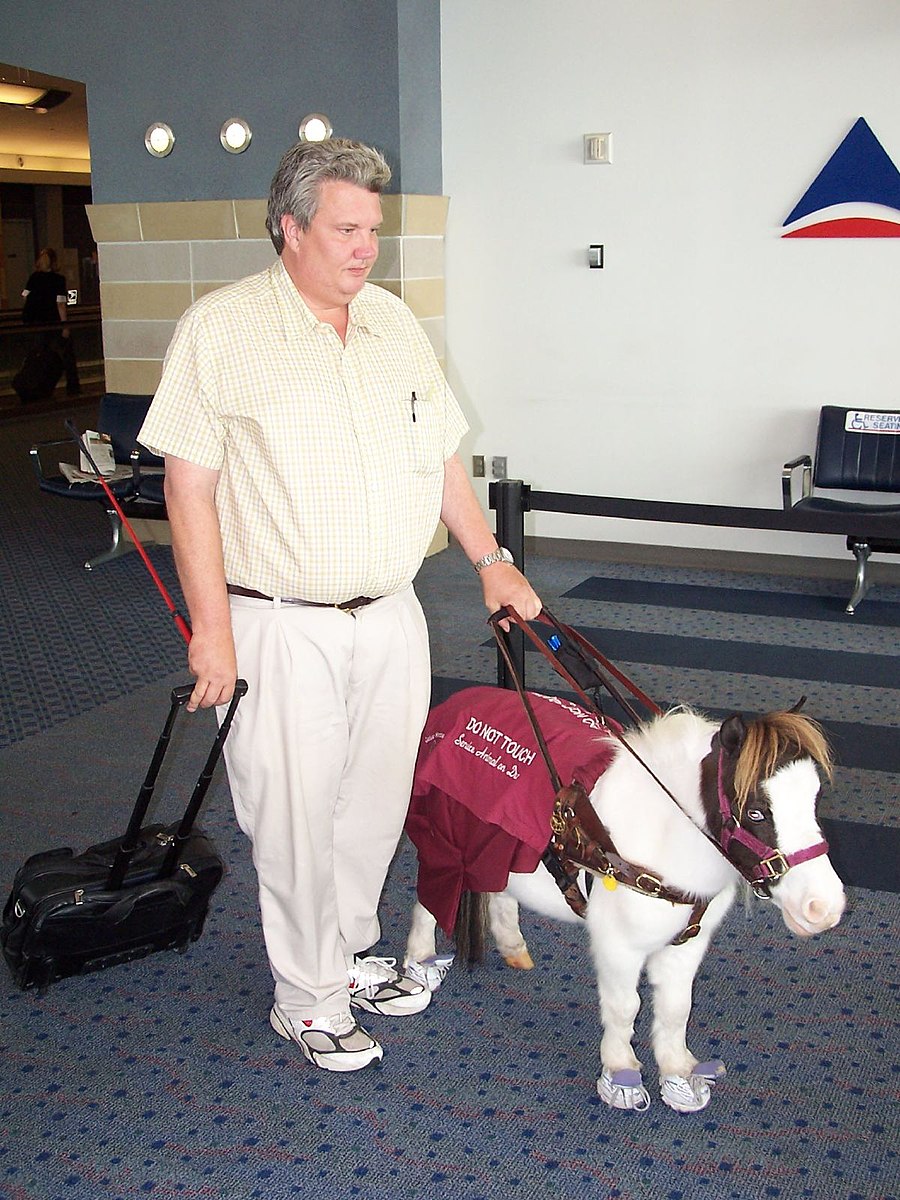
5. Great Memory
Horses have amazing memories. I know that’s a fact because of my childhood with horses, but the foundation adds that horses will naturally remember a dangerous situation decades after it happened.
6. Excellent Vision
Because of the placement of their eyes, a horse’s range of vision is almost a remarkable 350 degrees. They are the only guide animals that can move each eye independently, meaning they can track potential danger with each eye. Plus, they can see very well in the dark.
7. Focused Demeanor
Trained horses are very focused on their work and are not easily distracted.
8. Safety Conscious
Horses are very alert and always looking for dangerous situations. “All horses have a natural propensity to guide their master along the safest most efficient route,” explains the foundation, “and demonstrate excellent judgment in obstacle avoidance training.”
9. High Stamina
Healthy horses are hearty and robust. Even miniature ones.
10. Good Manners
Guide horses can be housebroken; they do not get fleas and only shed two times per year. (This means they are also a great choice for people who are allergic to dogs.)
It’s a shame that miniature horses have lost their inclusion as service animals on planes, but for anyone who depends on a miniature horse, all may not be lost. According to Service Dog Certifications:
“Individual airlines can choose to transport other animals, including miniature horses, for free in the cabin to accompany a person with disabilities. However, if the service animal is not a dog, there are no guaranteed protections or accommodations under federal law for the animal or its handler. Service animals other than a dog is considered a pet and subject to the airline’s pet policies.
While federal law states that miniature horses are not accepted service animals for air travel, there might be a chance that an airline’s assistance animals policy overwrites the rules. Therefore, any individual with disabilities who is assisted by a service miniature horse should thoroughly check the airline’s policy before making travel arrangements.”
For more on why miniature horses are superstar service animals, watch this video of the remarkable Panda and how she helps her human.



